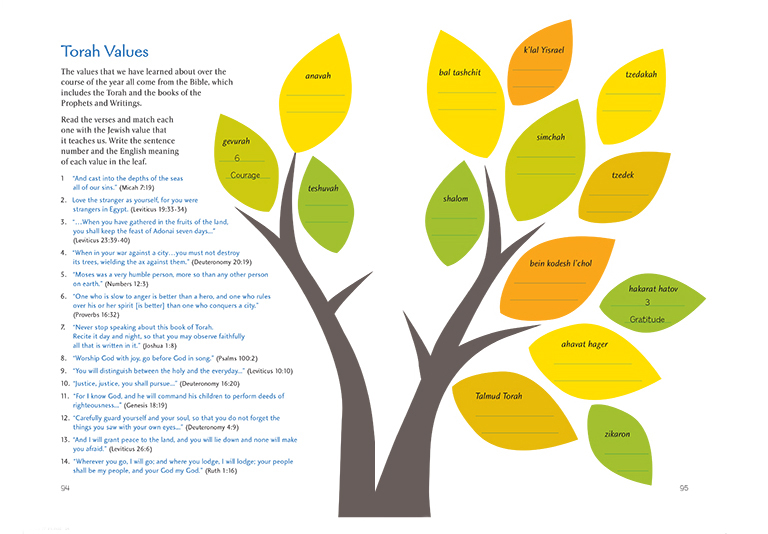Gifts and Gratitude: Educator Reflections on Shavuot
What’s the best gift you ever received?
For the Jewish people, receiving the Torah ranks pretty high. We celebrate this gift on Shavuot, which begins on Saturday evening. This Shavuot, explore how to connect this gift to values-based learning.
Originally an agricultural celebration, over time, Shavuot has come to be a thanksgiving of mitzvot, marked by reading both the story of receiving the Ten Commandments at Mount Sinai and the Book of Ruth.
“So much of the work we do involves encouraging our students to learn about and live by the mitzvot; how appropriate it is to end our year by expressing our gratitude for the ideas that have helped generations of Jews lead better, holier lives,” writes Bonnie K. Stevens in Teach Them Diligently: A Midrash on the Jewish Educator’s Year.
“…All of our students have at least one thing in common with Ruth: They have other choices available to them. Our students don’t have to be Jews unless they choose to do so. …The choice to remain Jewish cannot be taken for granted, will not happen by default. Our students don’t have to stay Jewish unless, like Ruth, they choose to live by the mitzvot, to accept the gift offered at Sinai. By helping our students see that the mitzvot are indeed a gift and not a burden, we help them make that choice. Their freedom to follow other paths makes our work more difficult but also more important.”
As you begin thinking about what you want to do for your students next year, consider the place in your program for values-based courses that promote character education. Of course, you want to give students the knowledge they’ll need to understand their heritage, to participate fully in congregations and communities. But fostering the development of ethical and responsible next-generation Jewish adults truly lies at the core of what educators do.
For example, Jewish Values in Exodus, for students in grades 4-6, uses biblical stories to help students make connections between Jewish values and their role in the larger community. Lessons on Shavuot ask students how the Israelites receiving Torah on Mount Sinai inspire us to make and keep commitments, and to consider what commitments are important to them personally and to us as a community.
In a chapter about receiving the Torah, some activities include:
* Tossing a ball to classmates and shouting out commitments students have in their own lives, such as practicing piano or caring for a pet
* Interpreting what it means for the people of Israel to be a “treasured people”
* Creating a class covenant, outlining student commitments to each other as a classroom community
* Making personal commitments to students themselves, their family, and community, and discussing what help and what makes it hard for them to keep their commitments

The Jewish Holidays, Jewish Values journal follows the calendar year and explores one or two Jewish values through its rituals and themes. The chapter on Shavuot, for example, explores the idea of the Torah as a gift. In one final activity, students match verses from the Tanach with the Jewish value it teaches us, a fitting wrap-up for a course connecting ancient texts and practices to what it means to be Jewish today.
Don’t forget to subscribe to our newsletter and connect with us on social media!



